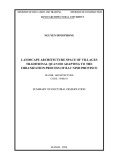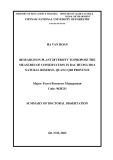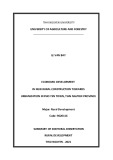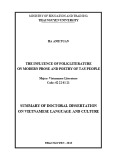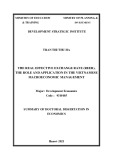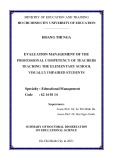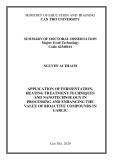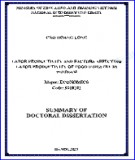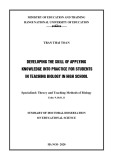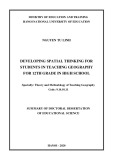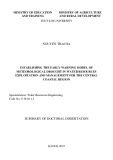
1
BACKGROUND
1. Necessity of the study
Surugiu (2009) unveiled that tourism significantly affects the foreign
exchange flow, infrastructure development, management technique and training
experience as well as other economic sectors, actively contributing to the socio-
economic development of a country. Tasci &Knutson's study (2004) specified that
not only in the developed countries, tourism is known as an increasingly developed
industry both in developing countries and underdeveloped countries. Tourism's fast
growth is recently recorded and acknowledged as the key economic sector of the
country. Tourism activities are eventfully carried out from cities to rural areas, from
coastal and island area to mountainous area and highland. According to Phuong Lien
(2017), Vietnam tourism was recorded with 13 million and 74 million of turns of
international tourists and domestic tourists, increase in 30% and 20%, respectively.
Total direct income from tourism hit over VND 500,000 billion, equivalent to US$ 23
billion, contributing approximately 7.5% to GDP of Vietnam.
Tourism development facilitates the rural and urban appearance
improvement, generating more jobs for the residential classes and the society.
Vietnamese business environment has been perfected for the tourism fussinesses to
develop tourism as the key economic sector even though Vietnam tourism has just
started since opening door policy since 1991. However, Vietnam tourism
development is also recorded with non-sustainability and a series of weakness
against that in other regional countries. Tourism is still recognized as a young
player. The business environment is often impacted by the globalization factors;
hence, tourism business environment is still available with an ocean of
shortcomings, adversely affecting the tourism business performance. Furthermore,
Vu Khac Chuong (2015) emphasized that: Any country which joins this process
shall become prosperous and civilized, vice versa, those reject it shall be subject to
poverty and backward.
It is essential to investigate business environment in the cut-throat competition
context of newly-born service industry to find out the feasible solutions to perfect the
business environment for tourism enterprises. That is why, the “Perfecting the
business environment for Vietnamese tourism enterprises during globalization”
topic selected for the study.
2. Tasks and objectives
2.1. Research tasks:
The research tasks are originated from the above objectives, including:
- Determine theoretical basis on business environment’s impact on
bussiness;
- Investigate the existing conditions of business environment of available
Vietnamese tourism enterprises;





